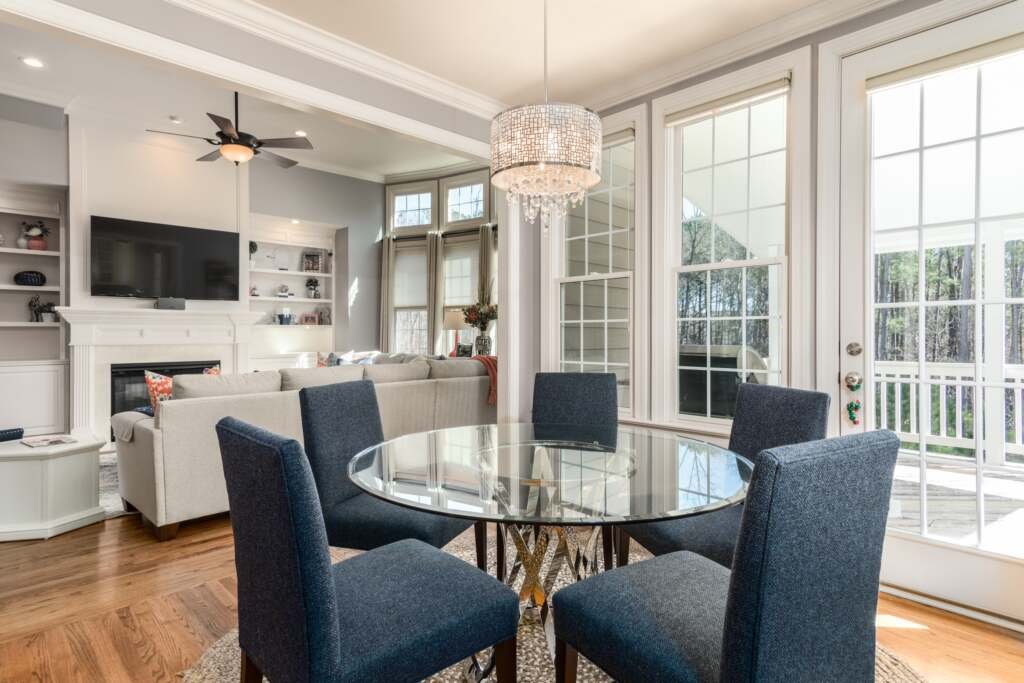
Creating Your Dream Space: Unveiling the Secrets of Interior Décor. When it comes to interior design, there’s a world of possibilities waiting to transform your living space into a reflection of your personality and style. From the sleek lines of modern design to the cozy comfort of Scandinavian interiors, the choices are diverse. In this article, we’ll explore five distinct interior design styles: modern, minimalistic, traditional, industrial, bohemian, and Scandinavian.
Characteristics: Modern interior design is all about embracing the future with a focus on clean lines, functionality, and simplicity. It incorporates the latest trends in architecture and décor to create sleek, uncluttered spaces.
Key Elements:

Learn More;
Best Books on Modern Interior Design:
No products found.
Characteristics: Minimalism takes the “less is more” approach, emphasizing simplicity, functionality, and the removal of excess. It creates serene, clutter-free spaces that promote calmness and mindfulness.
Key Elements:

No products found.
Characteristics: Traditional design draws inspiration from classic European styles, creating spaces with a sense of timeless elegance. It’s known for its warmth, richness, and attention to detail.
Key Elements:

No products found.
Characteristics: Industrial design takes cues from factories and warehouses, embracing raw, edgy aesthetics. It celebrates exposed materials and structural elements.
Key Elements:

No products found.
Characteristics: Bohemian, or boho, design is free-spirited and eclectic, often characterized by a mix of patterns, colors, and textures from around the world. It celebrates individuality and creativity.
Key Elements:

No products found.
Characteristics: Scandinavian design is rooted in simplicity, functionality, and the concept of hygge, which emphasizes coziness and comfort. It’s known for its clean lines, natural materials, and muted color palettes.
Key Elements:

Read More On Scandinavian Interior Design:
No products found.
In conclusion, your choice of interior design style can significantly impact the look and feel of your living space. Whether you prefer the sleek lines of modern design, the serene simplicity of minimalism, the timeless elegance of traditional décor, the edgy appeal of industrial aesthetics, the creative chaos of bohemian style, or the cozy elegance of Scandinavian interiors, each style has its own unique charm. Ultimately, the secret to successful interior décor lies in understanding your personal preferences and creating a space that truly feels like home.
Your home is more than just a physical space; it’s a reflection of your personality, tastes, and lifestyle. Over time, your needs and preferences can change, and your living space should evolve with you. Here are several compelling reasons why you might want to consider changing or rebranding your home style or interior:
As you go through different stages of life, your lifestyle can change significantly. For example, if you’ve recently become a parent, your home may need to accommodate the needs of a growing family. On the other hand, if you’re now an empty nester, you might want to downsize and create a more minimalist and functional space.
Over the years, your personal tastes may evolve. What once appealed to you may no longer feel as aesthetically pleasing or aligned with your current preferences. Changing your home style allows you to surround yourself with elements that resonate with your present tastes.
Sometimes, the layout and design of your home may not be as functional as you’d like it to be. Rebranding your home can involve making changes to improve functionality, such as creating better storage solutions, optimizing room layouts, or updating the kitchen and bathroom for improved usability.
Your home environment can have a significant impact on your mental and emotional well-being. A space that feels outdated or uninspiring can contribute to feelings of stress and discontent. By rebranding your home with a style that uplifts and energizes you, you can enhance your overall mood and happiness.
If you’re thinking of selling your home in the future, updating the interior design can significantly increase its resale value. Homes with well-designed and appealing interiors tend to attract more buyers and command higher prices in the real estate market.
Interior design trends come and go. If you want your home to feel fresh and up-to-date, occasional rebranding can help you incorporate current design elements, materials, and color palettes that are popular in the present moment.
Your home should be a reflection of your unique personality and interests. Rebranding your interior allows you to express your individuality and create a space that feels uniquely yours.
If you’ve developed new hobbies or passions, your home can be adapted to accommodate them. For example, if you’ve taken up gardening, you might want to create an indoor garden space or a dedicated area for your plants.
Rebranding your home can also involve making eco-friendly updates. This can include installing energy-efficient appliances, adding better insulation, or using sustainable materials in your design, all of which can reduce your environmental footprint and lower utility bills.
Sometimes, life changes or significant events call for a fresh start. Rebranding your home can be a symbolic way of ushering in a new chapter, leaving behind the old and embracing the new.
In conclusion, changing or rebranding your home style or interior is a dynamic and personal process. It allows you to adapt your living space to your evolving needs, tastes, and aspirations. Ultimately, your home should be a place where you feel comfortable, inspired, and truly at home.